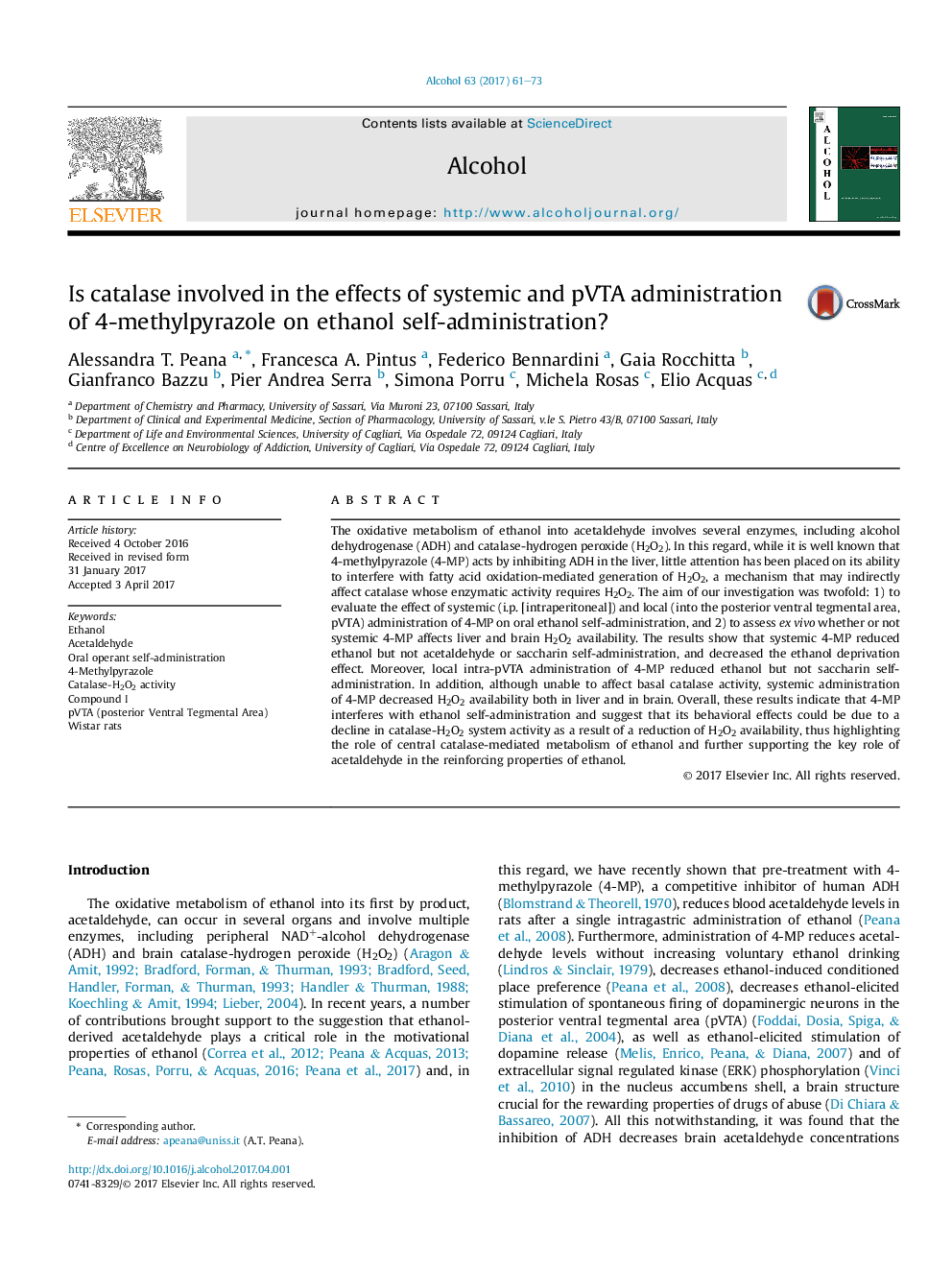| Article ID | Journal | Published Year | Pages | File Type |
|---|---|---|---|---|
| 5119693 | Alcohol | 2017 | 13 Pages |
Abstract
The oxidative metabolism of ethanol into acetaldehyde involves several enzymes, including alcohol dehydrogenase (ADH) and catalase-hydrogen peroxide (H2O2). In this regard, while it is well known that 4-methylpyrazole (4-MP) acts by inhibiting ADH in the liver, little attention has been placed on its ability to interfere with fatty acid oxidation-mediated generation of H2O2, a mechanism that may indirectly affect catalase whose enzymatic activity requires H2O2. The aim of our investigation was twofold: 1) to evaluate the effect of systemic (i.p. [intraperitoneal]) and local (into the posterior ventral tegmental area, pVTA) administration of 4-MP on oral ethanol self-administration, and 2) to assess ex vivo whether or not systemic 4-MP affects liver and brain H2O2 availability. The results show that systemic 4-MP reduced ethanol but not acetaldehyde or saccharin self-administration, and decreased the ethanol deprivation effect. Moreover, local intra-pVTA administration of 4-MP reduced ethanol but not saccharin self-administration. In addition, although unable to affect basal catalase activity, systemic administration of 4-MP decreased H2O2 availability both in liver and in brain. Overall, these results indicate that 4-MP interferes with ethanol self-administration and suggest that its behavioral effects could be due to a decline in catalase-H2O2 system activity as a result of a reduction of H2O2 availability, thus highlighting the role of central catalase-mediated metabolism of ethanol and further supporting the key role of acetaldehyde in the reinforcing properties of ethanol.
Related Topics
Life Sciences
Biochemistry, Genetics and Molecular Biology
Biochemistry
Authors
Alessandra T. Peana, Francesca A. Pintus, Federico Bennardini, Gaia Rocchitta, Gianfranco Bazzu, Pier Andrea Serra, Simona Porru, Michela Rosas, Elio Acquas,
